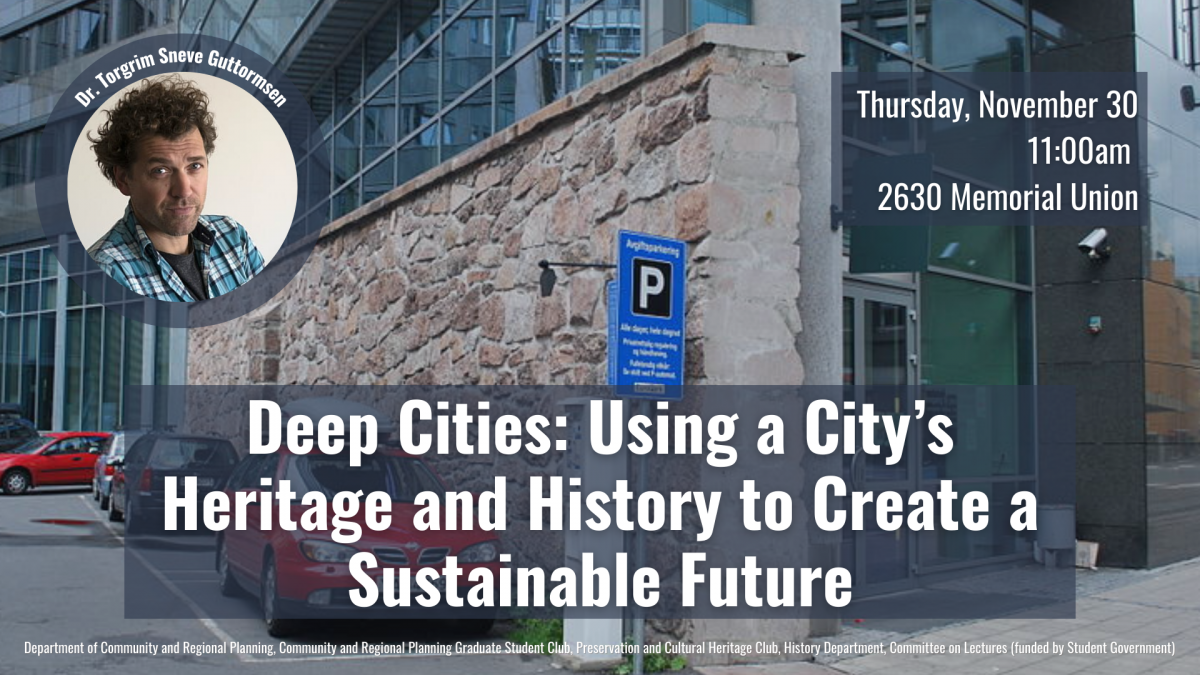Deep Cities: Using a City's Heritage and History to Create a Sustainable Future
- Department of Community and Regional Planning
- Community and Regional Planning Graduate Student Club
- Preservation and Cultural Heritage Club
- History Department
- Committee on Lectures (funded by Student Government)

The lecture will use the recently completed JPI-CH research project 'Curating Sustainable URBAn Transformations through HERITage' as a lens for discussing how archeology can be a theoretical resource in planning with urban heritage for future cities. In our project, we have launched the concept of 'Deep Cities' as a methodological approach to understand how the layered historical city - the transformative and trans-temporal character of cities - turns into heritage values which merits conservation and for being implemented in urban planning.
The presentation will first focus on the role of urban heritage for socially sustainable urban futures, introducing some of the key findings of the CURBATHERI – Deep Cities project. What makes a "livable city" that supports factors such as identity, belonging, quality of life and health for all residents in mixes of historic and renewed urban environments? What is the role of urban heritage in socially inclusive and sustainable placemaking? Afterwards, the presentation will focus on the distinctive nature of urban archaeological heritage when activated as a conceptual tool in urban placemaking. Theoretical terms such as 'decay', 'collage', 'palimpsest' and 'stratigraphy' and the role urban transformation has in Change Management are discussed as planning concepts which in their own way define approaches to implementing the traces of the past in different cityscapes.
Note: This lecture will feature Dr. Guttormsen presenting via Zoom. He will be taking questions live at the end of his talk.
Torgrim Sneve Guttormsen PhD is Research Professor and the Head of the Heritage and Society Department at Norwegian Institute for Cultural Heritage Research. He is trained in archaeology and heritage studies with research emphasis on cultural heritage management and politics, heritage and planning, urban heritage, immigrant heritage, difficult heritage, public archaeology and the history of archaeology. With his focus on studying monuments, memorials and commemorations his research also interfaces memory studies and museum studies.
Torgrim is an Honorary Professor at the University of Stirling Centre for Environment, Heritage and Policy for the period 2021-2024. He was a Visiting Professor at the Centre for Land and Cultural Resources Research at Fudan University in China for the period 2017-2022 and has been a Visiting Scholar at the Centre for Heritage and Museum Studies, the Australian National University. His edited books include ‘Heritage and Sustainable Urban Transformations. Deep Cities’ (Routledge, 2020) and ‘Heritage, Democracy and the Public. Nordic Approaches’ (Routledge, 2016). Latest publication is the co-authored paper from 2023 ‘Assemblage urbanism: the role of heritage in urban placemaking’, published in Journal of Cultural Heritage Management and Sustainable Development.
This lecture was recorded and can be accessed on the Available Recordings page.